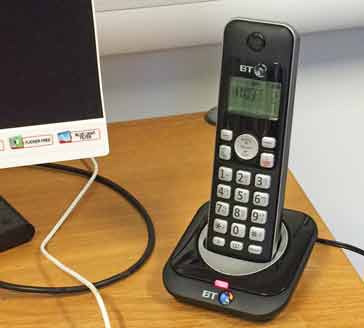DECT Standard: ETS 300 175
The DECT standard is contained within ETS 300 175 and defines the DECT system fromt he physical layer of the radio interface to the networking, addressing and security.
DECT cordless telephones includes:
DECT basics
DECT standard
DECT RF interface / physical layer
DECT channels & bands
DECT security
Cordless phone buying guide
The DECT cordless phone system has gain widespread acceptance. Many millions of DECT phones are in use around the world, its use spreading well beyond the boundaries of Europe where it was originally envisaged it would be used, and it is used in well over 100 countries around the globe.
The standard for DECT or Digital Enhanced Telecommunications system was developed by members of the European Telecommunications Standards Institute (ETSI).
The fact that DECT has an agreed standard has been a major element in its success. This has enabled it to be used across a large number of manufacturers, and it enables phones from one manufacturer to operate with equipment from another.

DECT standard
The DECT standard is contained in ETS 300 175 of which there are eight parts, each defining different aspects of the system. The DECT standard, ETS 300 175 consists of a comprehensive set of requirements, protocols and messages. By defining the standard very closely it is possible to achieve interworking reliably not only between handsets and base stations, but also to the telecommuications network itself.
The major sections of the DECT stadanrd ETS 300 175 are defined in the table below:
| Part | Title | Description |
|---|---|---|
| 1 | Overview | General introduction and overiew to the document detailing the other parts of ETS 300 175 DECT standard. |
| 2 | Physical layer | This details the radio interface and characteristics for the DECT standard. These include: frequency band, carrier frequency allocation, modulation method, transmission frame structure, transmitted power limits, spurious emission requirements etc. |
| 3 | Medium Access Control Layer | The MAC section of the DECT standard details the description of procedures, messages, and protocols for radio resource management. These include the link set-up, channel selection, handover, link release and link quality maintenance. |
| 4 | Data Link Control Layer | This section provides description of provisions to secure a reliable data link to the network layer. |
| 5 | Network Layer | This details the signalling layer with call control and mobility management functions and protocols. |
| 6 | Identities and Addressing | Description of the portable and fixed part identities requirements for all DECT application environments. |
| 7 | Security Aspects | The security is important and it details the methods of ensuring security to prevent eavesdropping, unauthorised access, hacking and fraudulent use. |
| 8 | Telephony | Telephony requirements for systems supporting the 3.1 kHz speech service to ensure proper interworking with public telecommunications networks. Defines transmission levels, loudness ratings, sidetone levels, frequency response, echo control requirements etc. |
DECT standard salient features
This standard defines specification for the system and the way in which it operates. The salient features for DECT are defined below:
| DECT standard salient features | |
|---|---|
| Parameter | Specification |
| Frequency band | 1880 MHz to 1900 MHz |
| Access technique | MC/TDMA/TDD |
| Symbol rate | 1152 k Symbol/s |
| Carrier spacing | 1728 kHz |
| Frame duration | 10 ms |
| Access channels/RF carrier | 12 duplex 32 k bit/s channels |
| Traffic channels/single radio | TRX 12 |
| Traffic Channel assignment | Instant dynamic |
| Control carriers | Not required |
| Modulation | GFSK (BT = 0,5) and optional higher level Modulation schemes possible |
| LO stability | 25 ppm |
| Portable average RF power | 10 mW |
| Portable peak RF power | 240 mW 24 dBm |
| Speech codec | 32 kbit/s ADPCM |
| Base Station sensitivity at 0,1 % BER | -86 dBm (for GAP) (typically -90 dBm to -94 dBm) |
| Basic link budget | 110 dBm (Typ.114 dBm to 118 dBm) |
| Protected 64 kbit/s bearer service | Yes |
| Base station antenna | Diversity Switched. Post detection selection optional Dual antennas in handset Optional |
| Tolerance to time dispersion with selection antenna diversity | 200 ns (500 ns possible with low-cost non-coherent equalizer) |
The DECT cordless phone system is now a well established standard that is widely used for domestic as well as business applications. With the extensions that are now available to the standard, it has become a very flexible system, and this is much of the reason for the success of the DECT cordless phone system.
Wireless & Wired Connectivity Topics:
Mobile Communications basics
2G GSM
3G UMTS
4G LTE
5G
Wi-Fi
Bluetooth
IEEE 802.15.4
DECT cordless phones
Networking fundamentals
What is the Cloud
Ethernet
Serial data
USB
LoRa
VoIP
SDN
NFV
SD-WAN
Return to Wireless & Wired Connectivity



